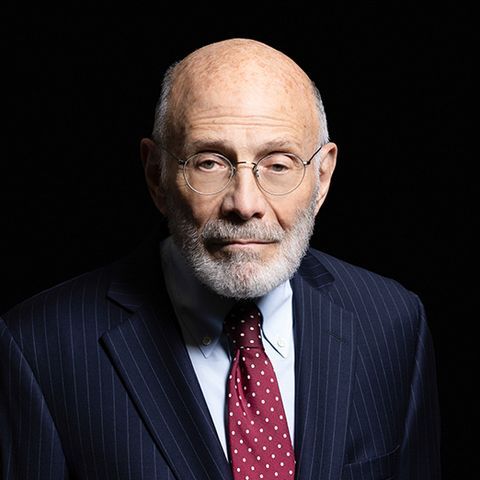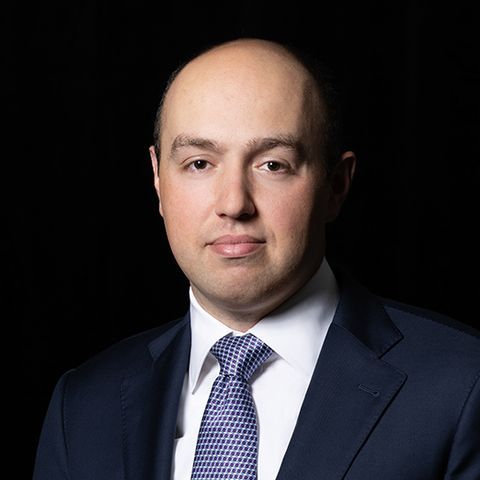Alerts
Second Circuit’s Purdue Pharma Ruling: Third Party Releases Remain a Question of Geography
June 20, 2023
On May 30, 2023, the U.S. Court of Appeals for the Second Circuit affirmed a bankruptcy court’s confirmation of a chapter 11 reorganization plan containing nonconsensual releases of direct claims against third-party non-debtors, including the debtor’s controlling owners, the Sacklers. In doing so, the Court of Appeals reversed the forceful opinion of the district court and held that releases of direct claims are permitted under both Bankruptcy Code §§ 105 (a) and 1123(b)(6) and under “this Court’s case law.” One judge on the three-judge panel “reluctantly” concurred with the majority’s holding only because of “binding” Second Circuit precedent in In re Drexel Burnham Lambert Grp., Inc., where the Second Circuit previously found bankruptcy courts have power to release third-party direct claims against non-debtors without the third parties’ consent. In re Purdue Pharma L.P., 2023 WL 3700458 (2d Cir. May 30, 2023).
Background
Purdue Pharma, a manufacturer of branded opioid medications, including OxyContin, filed for bankruptcy on Sept. 15, 2019. The Company faced significant threats to its continued viability stemming from mass-tort litigation over Purdue’s marketing and sale of prescription opioid medications, including OxyContin.
The Plan sought to resolve the opioid litigation by incorporating a settlement framework that included a release of the family that owned the equity in Purdue, the Sackler family, in exchange for a lump sum settlement payment of $4.325 billion at the time of confirmation. The Court approved this Plan and entered a confirmation order on Sept. 17, 2021.
Eight states, the District of Columbia, certain Canadian creditors, three pro se individuals and the U.S. Trustee appealed the confirmation order. The District Court vacated the Bankruptcy Court’s Order on Dec. 16, 2021, setting up an appeal to the Second Circuit.
The appeal tasked the Second Circuit with addressing two key questions: (1) does the Code permit nonconsensual third-party releases of direct claims against non-debtors, and (2) were such releases proper here in light of all equitable considerations and the facts of this case? The Second Circuit answered both in the affirmative.
The Second Circuit Approves Non-Consensual Third-Party Releases
In its analysis, the Second Circuit found that the ultimate authority for nonconsensual releases of direct third-party claims against non-debtors lies in Bankruptcy Code § 105(a) (“any order . . . necessary or appropriate” to implement Code “provisions”) and § 1123(b)(6) (plan may include any “provision not inconsistent with Code”). Furthermore, the Court held that § 524(e) of the Bankruptcy Code does not bar such claims.
Some circuits reason that a debtor who invoked and submitted to the bankruptcy process is entitled to the Code’s protections, but not third-parties. See e.g., In re Pac-Lumber Co., 584 F.3d 229, 251-53 (5th Cir. 2009); In re Lowenschuss, 67 F.3d 1394, 1401-02 (9th Cir. 1995); In re W. Real Estate Fund, Inc., 922 F.2d 592, 600-02 (10th Cir. 1990). However, the Second Circuit did not consider § 524(e) to limit a Bankruptcy Court’s powers to release a non-debtor and “if Congress meant to include such a limit, it would have used the mandatory terms “shall” or “will” rather than the definitional term “does.” As the concurring opinion noted when highlighting this split, the primary issue on appeal — “extinguishing direct… claims against non-debtors without compensating the claimholder… has divided the courts of appeals for decades,” and “would benefit from nationwide resolution by the Supreme Court.”
What’s more, to bolster their reasoning for upholding the Bankruptcy Court’s authority to impose such releases, the Second Circuit relied on circuit case law precedent. In particular, the court noted that third-party releases are (i) okay if an injunction “plays an important part in the … reorganization plan;” (ii) “[not] discharges” and (iii) not limited to “asbestos cases.”
With precedent and the Code permitting the imposition of third-party releases, the Second Circuit turned to the releases’ propriety and circumstances when they may be approved. The Court laid out a seven factor test that focused on standards such as (1) identity of interests between the debtors and released third parties; (2) factual and legal overlap of claims against the debtors and released parties; (3) the scope of the releases; (4) how essential the releases are to the reorganization; (5) substantial contribution of assets by the non-debtor; (6) overwhelming approval by creditors; and (7) fair payment of enjoined claims.
However, the allowance of releases here should not be mistaken for blanket permissibility. To the contrary, the Second Circuit’s endorsement of the Purdue Pharma releases was accompanied by caution against abuses. Citing Judge Wiles’ Bankruptcy Court decision in Aegean Marine Petroleum Network, the Second Circuit “endorse[d] the view that ‘third-party releases are not a merit badge that somebody gets in return for making a positive contribution to a restructuring,’ nor are they ‘a participation trophy’ or ‘gold star for doing a good job.’”
Instead, the Second Circuit stated that “acts taken ‘in contemplation of bankruptcy ha[ve] long been, and continue[] to be, associated with abusive conduct.’” In that regard, the Court emphasized particular findings of the Bankruptcy Court that informed their analysis, such as the Bankruptcy Court’s (i) substantial narrowing of the release to apply to “legally relevant” or “overlapping claims” against the estate and (ii) restriction of the scope of the release to ensure that the released claims related to the Debtors’ conduct and the estate.
Relatedly, the Second Circuit’s upheld one portion of the District Court’s ruling, which provides some additional clarity on how the Second Circuit might view releases going forward, with an eye toward curtailing potential abuse. The court agreed with the District Court that any plan containing a nonconsensual third-party release must receive final approval from a District Court.
While the availability and permissibility of third-party releases remains influenced by a court’s geography, the Second Circuit’s decision has reaffirmed that releases are allowed in certain and appropriate cases in the Second Circuit, but must not be abused.
Analysis and Takeaways
The decision is important for a number of reasons.
- The Second Circuit has opened the door to wide-spread non-consensual third party releases of parents and/or controlling owners of a bankruptcy debtor. This could lead to significant – though expensive – compromises for such parties.
- While certain recent rulings trend favorably, others may make it harder for parents to obtain releases. The District Court for the District of Delaware recently held that the Bankruptcy Court overseeing the Boy Scouts of America bankruptcy has the power to approve nonconsensual third-party releases under appropriate circumstances. On the other hand, certain courts have not allowed cases to progress to the plan stage, despite the professed need for releases in order to confirm a chapter 11 plan.
- The decision further amplifies a split among circuit courts as to the permissibility of nonconsensual third-party releases. As the concurrence observed, the ultimate resolution of the third-party release issue remains a “function of geography.” The Supreme Court has not yet granted cert on this matter.
- The decision outlines a list of seven factors to evaluate the propriety of nonconsensual third-party releases in the hopes of “guid[ing] future courts.” Parties can consider these closely in evaluating potential settlements.
Authored by Kristine Manoukian, Douglas S. Mintz, Michael L. Cook, Peter J. Amend and Reuben E. Dizengoff.
If you have any questions concerning this Alert, please contact your attorney at Schulte Roth & Zabel or one of the authors.
This communication is issued by Schulte Roth & Zabel LLP for informational purposes only and does not constitute legal advice or establish an attorney-client relationship. In some jurisdictions, this publication may be considered attorney advertising. © 2023 Schulte Roth & Zabel LLP. All rights reserved. SCHULTE ROTH & ZABEL is the registered trademark of Schulte Roth & Zabel LLP.






